“I think that in my personal life, video games helped me to achieve a set of skills that proved to be essential for my professional life. I am a neurosurgeon.”
– Nicolás Samprón
Who would not agree with the idea that video games and screens are deleterious for our children?
I would not.
Let me explain why.
My first encounter with video games was at the age of 8, in the 1980s. Maybe it was Galaga, Frogger, or PacMan (which was never my favourite because it was too fast, the ghosts showed indifferent cruelty, and the games were painfully short). For the same price (you needed a coin per game), my brother and I would spend hours playing Karate Champ. Playing that game we quickly found “the trick”, a solution to the game, a mechanical and repetitive combination of joystick movements that proved infallible against all opponents.
Once we discovered “the trick,“ the game lost its appeal because it was an uncreative way of playing, the same combination of movements followed by the same result. To reach the final screen, all that was necessary was to maintain concentration and precision in the iterations.
The world of Karate Champ had two dimensions and was played with two joysticks that allowed for four basic positions each, representing the fighter’s movements. Another game, Kun Fu Master, was more diverse, dynamic, and exciting (enemies fell like flies), but I dedicated more time to Rygar. The world of Rygar also had two dimensions but was more complex, with more variables at play.
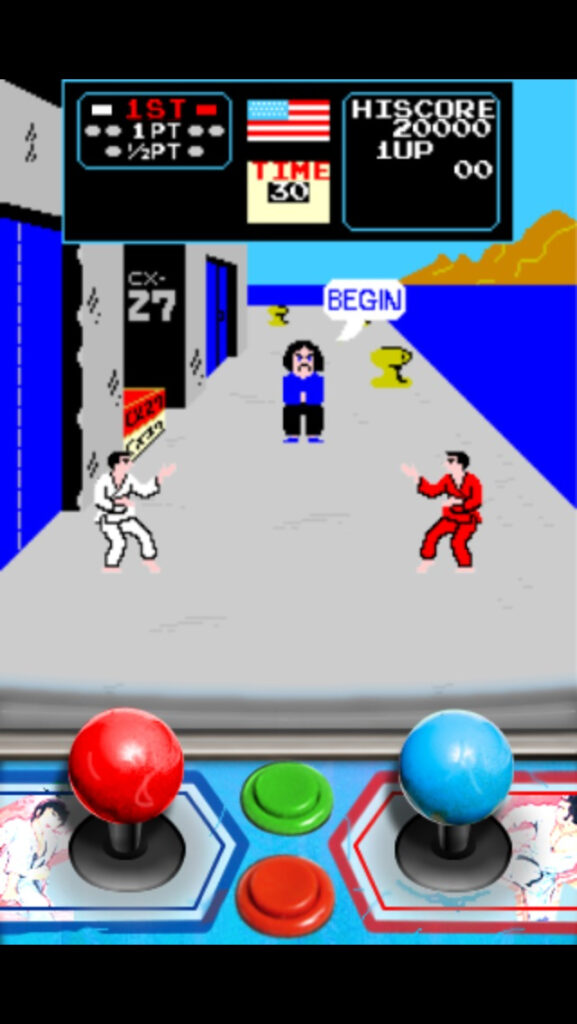
The world of Karate Champ has two dimensions and an unattainable perspective background. (image from toucharcade.com)
Firstly, the hero would improve (acquire more powers) as the player improved, the hero improved. On the other hand, there was mystery in the sense that the treasures that appeared along the hero’s path were always different. One of the treasures provided protection against all enemies (except falling into the void), and the most ingenious one was “the sign,” a question mark sign that the hero could, in turn, transform into any other treasure of their choice.
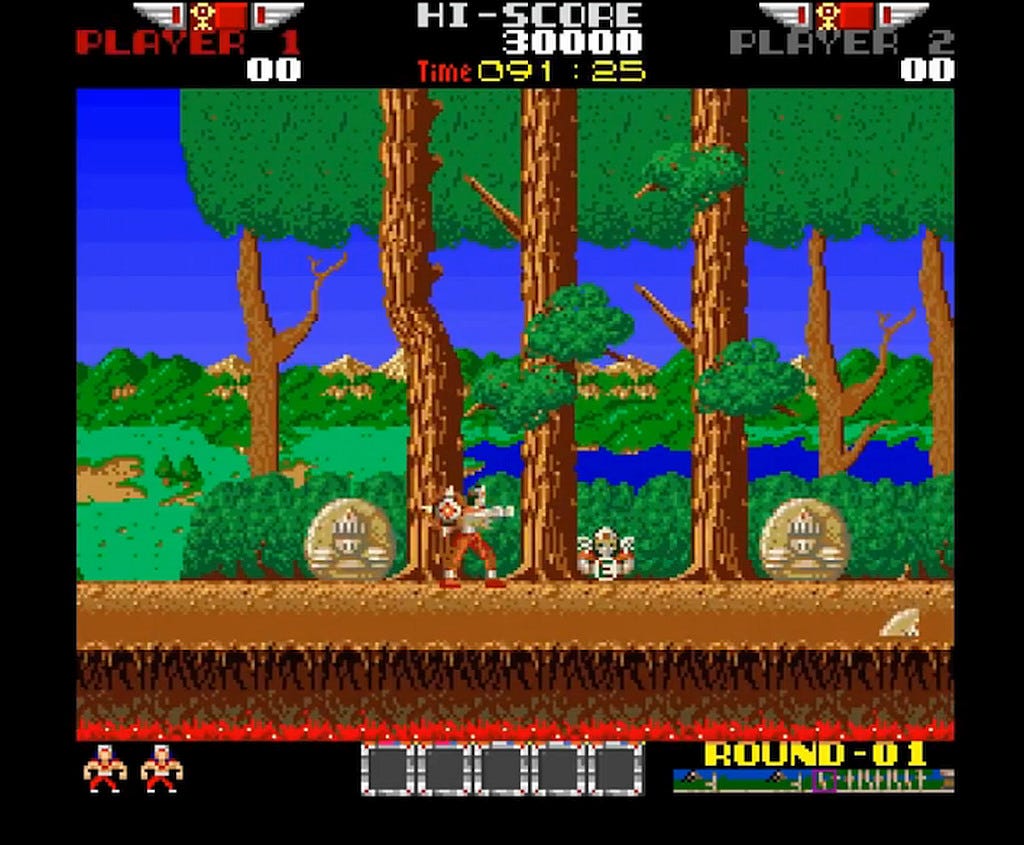
The image shows our hero in the forest of the first round (just before the well) the treasure that appears in front is the best possible because it corresponds to an additional life (image from www.idieretronews.com)
During that time, the incentives to perform well and avoid losing were significant. After losing, if you wanted to keep playing, you had to pay with real money. In my case, resources were limited, so I had to choose games that would last and in which I could reasonably perform well from the first few tries. The cost of switching games was not insignificant; novelty was fun but came at the expense of boredom.
Dear parents: video games are an unbeatable form of education
The arguments against video games are multiple and varied. According to detractors, they are addictive, filled with violence and sexism, and screens harm children’s eyesight. There are other arguments as well; the “wasted” time spent playing is time not dedicated to more important things, it’s a missed opportunity to enjoy nature, build social relationships, engage in physical exercise, read books, etc. Overall, critics claim that video games can harm children physically and emotionally, pushing them towards addiction and social isolation. The evidence for these claims is, however, poor, non-existent, or contradictory. It is said that the proof that all of this is true is that children enjoy playing them! And it is self-evident that everything that a kid enjoys is bad.
The truth is, not everything we like is bad.

“Too much reading” In this article, the eminent author regrets that people read so much. “You enter a railway compartment and every one is reading, even the travellers on the dim “Underground” taxing their sight by poring over the printed page.” Image from “pessimists’ archive” one of the best Substacks!
The criticism that video games receive is the present-day repetition of the objections raised against books, radio, television, cinema, cars, and other forms of media. It is, perhaps, resistance to innovation and an irrational fear of novelty and the unknown. Video games have arrived to stay and gain more prominence in multiple human activities. They are a major innovation with the potential to improve human life.
Imagine that one day your child comes home and instead of immediately sitting in front of the first screen they can find (or attempting to, if you’re one of those dedicated parents focused on your child’s education), they propose a strategy to improve their own education. A child who thinks about their own education! Although the scene may seem too beautiful to be true, I challenge you to continue with this conceptual exercise for a few minutes.
Starting from tomorrow, without exception, instead of wasting time on trivial matters, the child will spend all their free time training cognitive skills (attention, memory, abstract thinking), fine motor skills, advanced mathematics by von Neumann and Nass, and visuospatial and motor coordination. Simultaneously, they will study the geography of the real world and imaginary worlds, design strategies to achieve specific goals, and communicate—eventually reaching strategic agreements—with perfect strangers. Your child will do all this without needing to be pursued or punished, and will gradually increase the difficulty of tasks until reaching the final objective and then immediately moving on to another. Everything will be done with complete safety for their physical well-being and with perfect diligence.
The truth is, as you may have guessed, that that educational strategy consists of playing video games.
There are better and worse designed ones, that’s true. Allow me to explore two games I encountered in the 1980s, which seemed like mind-numbing rubbish to almost all adults (at least those I knew). I have to admit that nowadays I have stopped playing video games regularly; in fact, I stopped playing them when I was around 13 years old. Occasionally, I do play and, above all, I observe others and ask about what it’s all about and how it’s done. The games I’m referring to are almost prehistoric but relevant.
Frogger (a frog that must cross a busy street of traffic and a river filled with dangers to reach a safe refuge) is an example of training in coordinating vision with fine movements and time management. The game requires the player to control anxiety and plan their moves, among other skills.
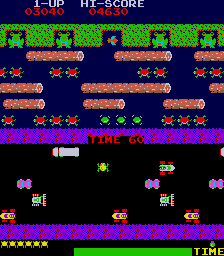
Frogger, an example of a game for training the coordination of complex brain activities (image from the corresponding Wikipedia article)
In Mario Bros, the player requires more complex visual and motor coordination (using the joystick in the left hand and two buttons with different functions in the right hand). In this game, it is necessary to remember the map and the behaviour of different types of enemies. It also requires calculating trajectories, managing time and resources if one wants to save the princess. The story told in Mario couldn’t be sillier! An Italian plumber dodging mushrooms, pits, and cute monsters. From what I can tell, in modern video games, the stories can become complex and intricate. They have improved.
I think that in my personal life, video games helped me to achieve a set of skills that proved to be essential for my professional life. I am a neurosurgeon.
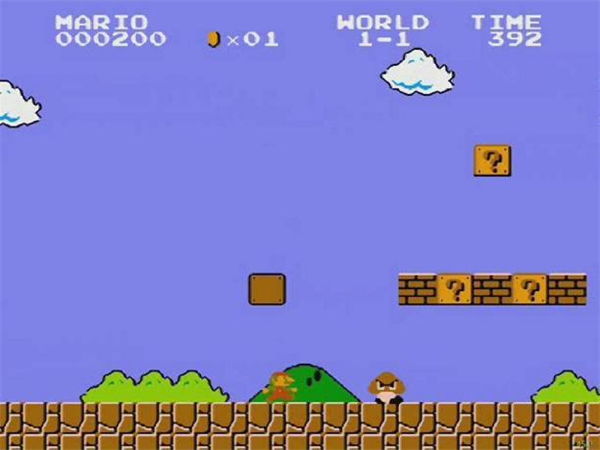
Mario Bros. In the scene Mario is seen facing off against an evil killer mushroom. But the fungus is not only a threat, it is also a springboard to reach the steps above.
Books are good, and conversations are even better
One of humanity’s most educational inventions is books, or rather, the content contained within books. Video games, in many ways, are even better. Written texts are not interactive; they are insensitive to our thoughts about them, they do not change or alter their appearance based on our actions. However, the most educational activity of all is conversation provided that it engages the attention of the participants. During a conversation, both the child and the adult receive immediate responses to their expressions and silences. Video games are the next in line in the hierarchy of educational tools. For this reason, I think that video games are not a passing trend; they represent a major innovation of humanity and are here to stay.
Bonus track: Video games as a treatment for neurological disorders
Video games are starting to be used as a treatment for dementia and other neurological disorders. But the scientific community is not exempt from biases, often dismissing this form of treatment and categorizing video games as either “serious” or “conventional”. It’s possible that some researchers may have found it easier to secure funding for studies if the therapeutic tool (the video game) didn’t resemble real-life experiences.
However, a controlled clinical trial comparing a “serious” video game (Kawashima’s Brain Training) with Super Mario Bros found that the latter was superior in improving working memory and visuospatial coordination.
Video games have the potential to become a tool for the diagnosis and treatment of neurological disorders. It might be that the more fun they are, the better.
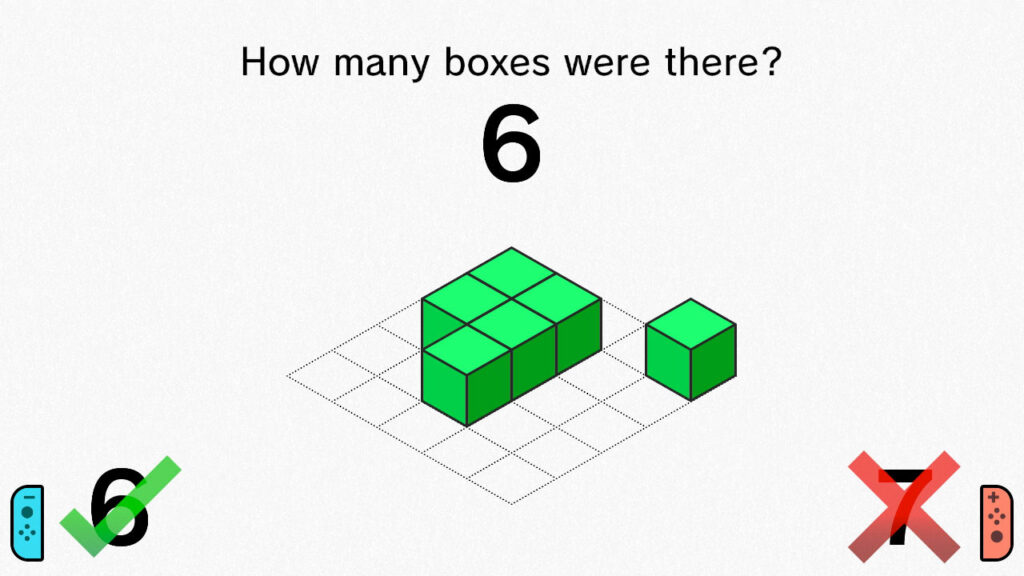
Kawashima brain trainer, an example of what is wrongly called “serious games”
An industry at the edge of the possible in digital technology
Medical technology and especially surgery would greatly benefit from the incorporation of ideas designed for video games whose scope is much greater. When observing the technological leap between the most modern of operating rooms and the most advanced of video games, it is inevitable to think of the enormous benefits that will be transferred from the entertainment industry to that of saving lives.
References
David Deutsch
Interviewed by Sarah Fitz-Claridge:
Video games: a unique educational environment
Sokolov AA, Collignon A, Bieler-Aeschlimann M. Serious video games and virtual reality for prevention and neurorehabilitation of cognitive decline because of aging and neurodegeneration. Curr Opin Neurol. 2020 Apr;33(2):239-248. doi: 10.1097/WCO.0000000000000791.
Perrot A, Maillot P, Hartley A. Cognitive Training Game Versus Action Videogame: Effects on Cognitive Functions in Older Adults. Games Health J. 2019 Feb;8(1):35-40. doi: 10.1089/g4h.2018.0010. Epub 2018 Oct 30. PMID: 30376364.
[aquí puede leer la versión original en español: Apología de los video juegos]
Nicolás Samprón is a father of two, physician, neurosurgeon, associate professor of Neurosurgery, and an optimist.
See also:
- “Is hiding medicine in your child’s food wrong?”
- The primary function of teachers is to coerce children
- Autonomous learning, autonomous life
Nicolás Samprón, 2023, ‘In defence of screens and video games’, https://takingchildrenseriously.com/in-defence-of-screens-and-video-games
